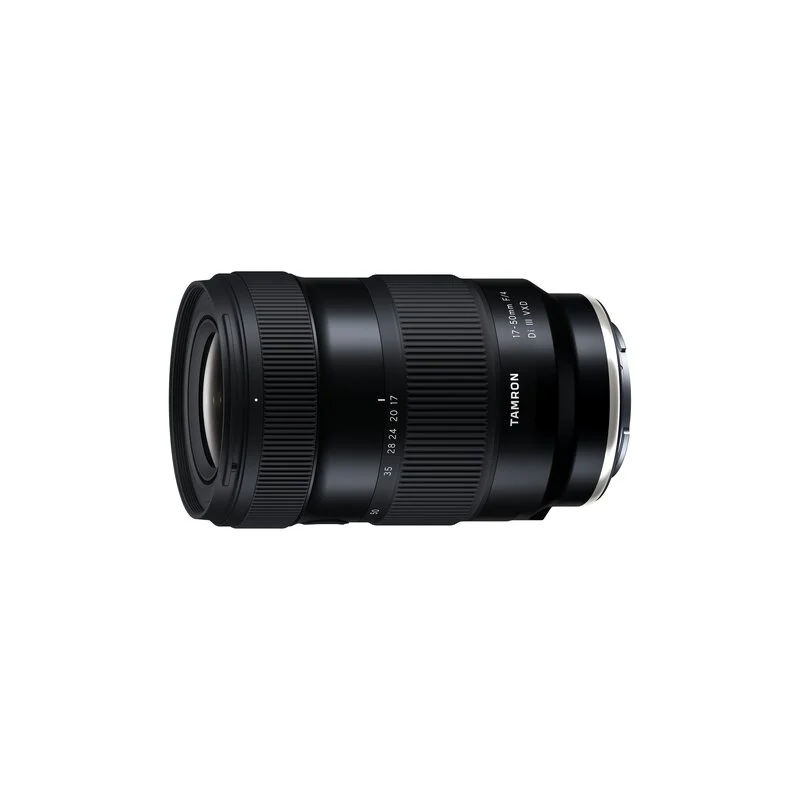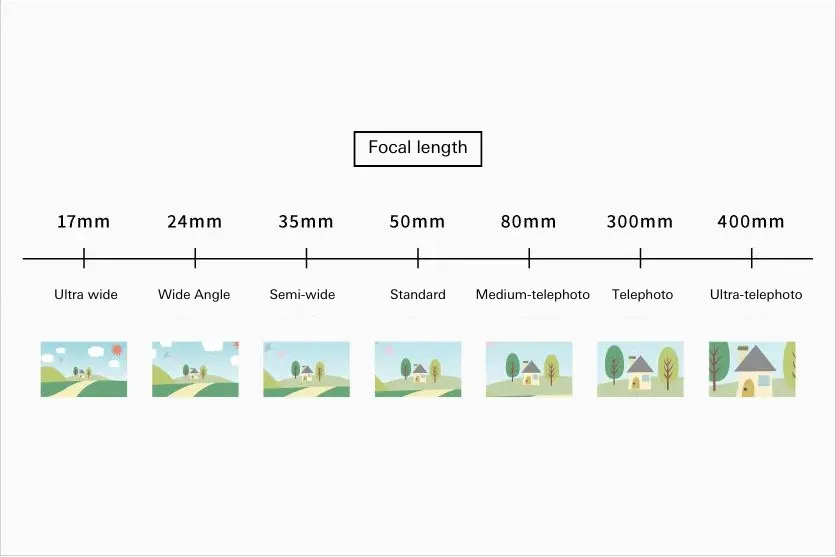September 30, 2024
Is a standard zoom lens necessary? Exploring the appeal and advantages of standard zoom lenses
Is a standard zoom lens necessary? Exploring the appeal and advantages of standard zoom lenses


If you normally use mainly prime lenses, or choose lenses designed for specific applications such as wide-angle or telephoto zooms, you may be wondering, “perhaps I can get by without a standard zoom lens?” By standard zooms are generally regarded as highly convenient, and are a type of lens that is often used. That’s why in this article we will introduce you to some of the advantages of using a standard zoom lens, along with some tips on how to use them, and situations in which it makes sense to use one.
A standard lens is with a focal length of around 50mm. As standard zoom lenses allow you to change the focal length, in general they often cover a range of view angles from the wide-angle end to the medium-telephoto end.
One of the reasons these lenses are referred to as “standard” is their characteristic view angles that approximate those of human vision. But while prime lenses with a similar focal length are also used often, prime lenses have a fixed focal length, which means the angle of view cannot be adjusted.
Looking at other types of lenses, a wide-angle zoom lens has an upper focal length of around 35mm or less, and as the name suggests, it allows you to take photos with a wide angle of view. A telephoto zoom lens has a lower focal length of around 80mm or higher, and allows you to enlarge distant subjects with a narrow angle of view. You could say that a standard zoom lens fits in between these two.
If you have prime lenses with focal lengths of 35mm or 50mm, you may feel that a standard zoom lens is not needed because it overlaps with the covered focal length. Prime lenses often have large apertures with f-stop values of 1.4 or 2.8, etc., and are known for their beautiful bokeh. And because of their simple construction, they tend to be lightweight and compact, making them a favorite of many photographers.
However, the drawback of a prime lenses is that the photographer needs to move in order to adjust the angle of view to the subject. On the flip side, using a prime lens can cultivate a good sense for how to move around a scene, but there are situations where it can seem inconvenient. In addition, to cover a wide range of view angles at the wide-angle and telephoto ranges you will need to have individual lenses for each of those focal lengths.
On that point, a standard zoom lens allows the photographer to change the angle of view without having to change their position. Moreover, TAMRON’s offers standard zoom lenses that achieve high resolving capabilities, bokeh, light weight and compact sizes similar to prime lenses, allowing photographers to combine the advantages of primes and zooms.
When the subject you want to photograph using an interchangeable lens camera is clearly decided on, there may be people who split use between a wide-angle zoom lens or telephoto zoom lens specific to reflect the specific shoot without using standard lenses. Moreover, as the long end of a wide-angle zoom and the short end of a telephoto zoom cover the range of a standard lens to some extent, there are cases where those two lenses are sufficient.
However, a standard zoom lens is optically designed to demonstrate maximum performance in the standard focal length range. That’s why for portraits, snapshots, table photos and similar cases where you want to take beautiful shots with a sense of distance and mood that reflects what our own eyes see, a standard lens is best.
As mentioned earlier, a standard zoom lens occupies the place between a wide-angle zoom and telephoto zoom. One benefit is that the focal lengths that can be shot at are not just right in the middle of the standard range, but cover the wide-angle and telephoto ranges to some extent.
On the other hand, while prime lenses excel at utilizing bokeh to produce photos with a sense of atmosphere, since the angle of view cannot be adjusted, depending on the conditions they may not be suited to photographing landscapes or subjects at a certain distance. That’s why if you have a standard zoom lens, you can flexibly adapt to a wide range of shooting scenarios.
When you actually start taking photos, you sometimes get a spark of inspiration that makes you want to starting photographing a scene in one certain way or another. There are also likely to be many cases where your movement as a photographer is limited. In those cases, if you have a standard zoom lens you are able to smoothly adjust the angle of view without having to shift your shooting position.
If you only had a prime lens, you would need to move around yourself to get closer to or farther from the subject while adjusting the angle of view. As much as a prime lens characteristically produces a lot of bokeh, particularly for beginners it may pose challenges in achieving focus and finding the best shooting positions. For this reason, when you want to take photos with a variety of expressions easily, opting for a standard zoom lens may be the way to go.
When traveling we tend to end up with a lot of luggage, and we want to make our camera gear as compact as possible. That’s why the ability to handle various situations with a single lens is best. As a standard zoom lens can handle a wide variety of situations from snapshots to portraits and landscapes, there is no need to carry around multiple lenses. A standard zoom lenses is therefore one of the travels companions we recommend.
A standard zoom lens is attractive because it lets you shoot at a natural angle of view that is the same as what you see with the naked eye, while also producing bokeh effects. That’s what makes it well suited to casual snapshots of daily life and photos of people. As you can capture the scene in front of you just as it appears, you can directly express the warmth of friends and family, intimacy with a partner, or the ambiance of a street scene. A zoom lens also makes it easier to control background information and the sense of bokeh.
Shooting scenes of cities and nature are an area where a wide-angle lens can demonstrate its strengths. As a wide-angle lens allows you to shoot with a wide angle of view, you can portray a sense of scale by capturing a scene in its entirety.
On the other hand, scenes photographed with a standard lens can lend a sense of familiarity as if the viewer is really there. You could say that a wide-angle lens excels when photographing stunning scenery that appears as a painting or something fictional, but we recommend a standard lens when you want to express the emotion of a scene as it actually looks, or convey the ambience of a location realistically without embellishment.
When taking photos of pets or children, many people want to use simple compositions. Pets and children often refuse to sit still, and there are cases when we purposely want to create a sense of distance. Additionally, in confined spaces such as indoors, our range of movement can be limited. As a standard zoom lens allows you to adjust the angle of view based on the sense of distance from the subject, it is well suited for photographing subjects in their natural state.
F-stop is a number indicating the aperture of a lens. The more the aperture is narrowed (indicated by a larger f-stop value), the less light it gathers and the less bokeh it produces. As a lens gathers more light at lower f-stop values, you can increase the shutter speed to suppress camera shake, and keep the ISO sensitivity lower even when shooting in dim locations.
The f-stop of a lens with its aperture is wide open is known as the “maximum” or “wide-open” aperture. The f-stop number cannot be reduced beyond this maximum aperture value of a lens. Therefore, the wide-open aperture of a lens is a good indicator of how bright it is and how much bokeh it can produce.
When you want to take images with higher image quality, it’s best to pick a lens with a large aperture indicated by a small f-stop value. We mentioned that prime lenses characteristically have small f-stop values, but there are models of standard zoom lenses with apertures of F2.8 and even F2. By choosing one of these zoom lenses, you will be able to enjoy brightness and bokeh similar to a prime lens.
People often carry around standard zoom lenses when out and about or traveling. In addition to light weight, a reasonable size is another point to look for in a standard zoom. If your lens is lightweight with a size that is easy to carry, it won’t get in the way during travel or other times when you are walking around.
For people who have just gotten started with an interchangeable lens camera or who go places with children, carrying around a bulky lens can often feel like a chore. Portability is an important factor in increasing opportunities to continually carry around and shoot with a camera and lens.
We mentioned that standard zoom lenses are known for allowing you to shoot with a natural angle of view that approximates human vision, but you can also achieve various expressions by zooming in on or pulling back from subjects. From that perspective, a lens with a shorten MOD can broaden the range of expression available to you.
For example, by getting really close to a subject such as a flower, insect or small object, you can emphasize its fine details to produce a compelling image. If you want to take macro-like shots with a standard lens, this is a factor you should definitely add to your considerations when choosing a lens.
We introduced several key points to consider when choosing a standard zoom lens, but you also need to be careful to choose a lens that matches your camera body.
Digital interchangeable lens cameras have two main types of sensors, full-frame and APS-C. Specifications for the joint (mount) that connects a camera body to a lens also differ by manufacturer and model. That’s why it is important to check that a lens is compatible with the sensor size and lens mount of your camera.
A standard lens allows you to capture impacts at an angle of view that approximates human vision. As a standard zoom lens allows you to broadly alter the focal length from the wide-angle to telephoto range, you can take photos while adjusting the angle of view to match a wide range of shooting situations from daily snapshots to portraits and landscape photography. A standard zoom lens is a particularly good fit for photographers looking for a good balance between convenience, portability and versatility.

Lens Featured in this Impression
-

-
20-40mm F/2.8 Di III VXD a062(Model )
The 20-40mm F/2.8 Di III VXD (Model A062) is a new large-aperture standard zoom lens that thoroughly pursues portability. While covering the range from the ultra-wide angle of 20mm to the standard range of 40mm, it is the smallest and lightest in its class. It also offers high image quality throughout the entire zoom range, making it useful not only for still image shooting but also for video recording such as vlogging. The VXD, which is quiet and agile, achieves high-speed, high-precision autofocusing. It is a new, unprecedented large-aperture standard zoom lens that allows users to easily enjoy taking out and shooting both still and video.
-

-
17-50mm F/4 Di III VXD a068(Model )
It's the world’s first lens covering from ultra wide-angle 17mm to the standard 50mm focal length. The highly-compact TAMRON 17-50mm F/4 Di III VXD (Model A068) for Sony E-mount full-frame mirrorless cameras offers maximum versatility for still and video creators. From landscapes to living rooms, this lens captures all that you see.
-

-
28-75mm F/2.8 Di III VXD G2 a063(Model )
Product Page | 28-75mm F/2.8 Di III VXD G2 (Model A063) is the second-generation fast-aperture standard zoom lens for Sony and Nikon full-frame mirrorless cameras, offering significantly improved optical and autofocus performance and new function customization.
-

-
17-70mm F/2.8 Di III-A VC RXD b070(Model )
The 17-70mm F/2.8 Di III-A VC RXD (Model B070) is a large-aperture standard zoom lens for APS-C format mirrorless cameras. With a focal length range of 17mm to 70mm (a full-frame equivalent of 25.5-105mm) for daily use, this achieves a 4.1x zoom. The optical design ensures high resolution and high contrast not just in the center of the image but also in corners and at the edges. The quiet AF drive motor and the VC image stabilization mechanism facilitate hand-held shooting. In addition, by counteracting focus breathing, the 17-70mm F2.8 empowers users' expression of their creative intentions to the fullest degree. This highly practical lens allows you to easily enjoy the high image quality of a large F2.8 aperture for both still and video shooting.








